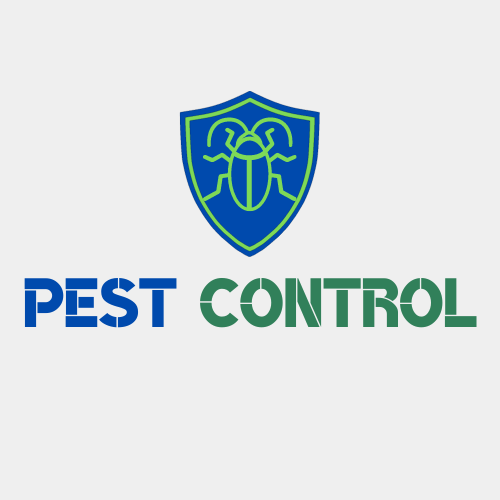Enhancing Pest Control Measures in Industrial Facilities: Best Practices and Innovations
In the bustling locality of 67269 Rincón del Parque, Juárez, the growth of industrial sectors is accompanied by an increased concern over pest management. Effective pest control is critical not only to ensure the health and safety of employees but also to maintain operational integrity and compliance with regulatory standards. With the dynamic nature of pest behavior and adaptability, developing pest-resistant designs and implementing innovative control strategies is essential for industry leaders.
The Importance of Developing Pest-Resistant Industrial Facility Designs
One of the first lines of defense in pest control is the physical structure of industrial facilities. Designing buildings with integrated pest management in mind can drastically reduce the likelihood of infestations. This includes:
1. Sealing Entry Points: Identifying and sealing all potential entry points, such as cracks, gaps in windows, and doors, can hinder pests from gaining access to the facility.
2. Utilizing Appropriate Materials: Selecting materials that are less appealing to pests—such as fiberglass insulation rather than cellulose—can offer long-term resilience against infestations.
3. Landscaping Considerations: Strategic landscaping can act as a natural barrier, deterring pests from approaching the facility by introducing plants that repel unwanted insects.
By investing in the design phase, companies not only reduce future pest control costs but also promote a cleaner, safer working environment.
Using Non-Repellent Termiticides for Maximum Effectiveness
For facilities located in areas prone to termite infestations, utilizing non-repellent termiticides is a game-changer. These chemicals do not have a scent that pests can detect, allowing them to enter treated areas without suspicion. Upon contact, the termiticides affect the insects’ ability to thrive and reproduce, leading to colony destruction.
The strategic application of these products at critical entry points and along industrial perimeters can instill long-lasting protection. Regular monitoring and retreatment are essential, as the effectiveness of non-repellent termiticides arises from their ability to remain undetected by the pests they aim to eradicate.
Increasing Pest Control Knowledge Among Industrial Employees
A well-informed workforce is a pivotal element of any effective pest control program. Providing training and resources that increase pest control knowledge among industrial employees can lead to early detection of pest issues, reducing the risk of severe infestations.
Key training aspects should include:
– Identifying Common Pests: Employees should be educated on the various types of pests that may infiltrate the facility and how to recognize the signs of infestation.
– Best Practices for Hygiene: Regular maintenance of cleanliness can drastically decrease the potential for pest attraction. Employees should be guided on proper disposal techniques and the importance of keeping workspaces clean.
– Reporting Procedures: Establishing a clear reporting protocol ensures that any signs of pests are swiftly communicated to management and pest control professionals.
Enhancing the knowledge of employees not only promotes better hygiene practices but also fosters a culture of vigilance, where pest control becomes a shared responsibility.
Installing Pest Barriers Around Industrial Perimeters
Preventative measures, such as installing physical barriers, can significantly lower the risks posed by pests. Creating an environment that is difficult for pests to penetrate is crucial, and several strategies can be employed:
1. Physical Barriers: Heavy-duty screens, doors, and grates can prevent entry points from being breached, while other installations such as gravel trenches around the perimeter may deter nesting.
2. Moisture Management: Pest control is intricately tied to moisture levels, as many pests are attracted to damp environments. Ensuring proper drainage and keeping the perimeters dry helps to deter unwanted pests.
3. Regular Inspections: Scheduling periodic assessments of barriers and perimeter defenses ensures that any breaches are promptly repaired and that structural integrity is maintained.
By proactively managing the outside environment, industrial facilities can reduce the temptation for pests to encroach on their premises.
Offering Insect Control for Small-Scale Biotech Labs
As small-scale biotechnology labs proliferate, the importance of specialized pest control grows. These facilities often house sensitive materials and projects that can be severely impacted by pest intrusions. Providing tailored insect control solutions designed for biotech environments is paramount.
This includes:
– Bio-Safe Solutions: Utilizing pest control methods that minimize the risks to sensitive biological processes and materials is key. This might involve the use of environmental pest control products that maintain the integrity of the lab’s function.
– Appropriate Audits: Conducting pest risk assessments specific to biotech labs helps to develop customized pest management plans that address unique vulnerabilities.
– Continuous Monitoring: Implementing monitoring solutions ensures that any incursions are quickly detected and addressed before they can compromise work environments or research outputs.
Using Time-Lapse Cameras to Monitor Rodent Activity
Innovations in technology are revolutionizing how industrial facilities manage pest control, particularly concerning rodent activity. Using time-lapse cameras for monitoring allows facilities to gather crucial data on rodent movements, enabling the creation of effective control measures.
Key benefits include:
– Behavioral Insights: Understanding the patterns and behaviors of rodents helps in predicting their movements and identifying hotspots for potential infestations.
– Targeted Interventions: Identifying the times and locations of rodent activity can lead to the development of targeted strategies that are more precise and effective.
– Documentation and Reporting: Time-lapse footage can be used for documentation purposes, providing visual evidence of pest activity that helps inform management decisions.
Incorporating technology into pest management not only enhances efficiency but also leads to a greater understanding of the interplays between pests and facility operations.
Conclusion
As industrial operations continue to evolve around 67269 Rincón del Parque, Juárez, investing in comprehensive pest control strategies becomes vital. From developing pest-resistant designs and utilizing effective termiticides to enhancing employee knowledge and deploying advanced monitoring techniques, the approach to pest management should be multifaceted and proactive.
By taking these strategic measures, industrial facilities can create a safer environment for workers, ensure compliance with regulations, and protect their investments in infrastructure and materials. Engaging with pest control professionals to tailor strategies that align with specific industry needs will further enhance the resilience of these facilities against pest incursions.
